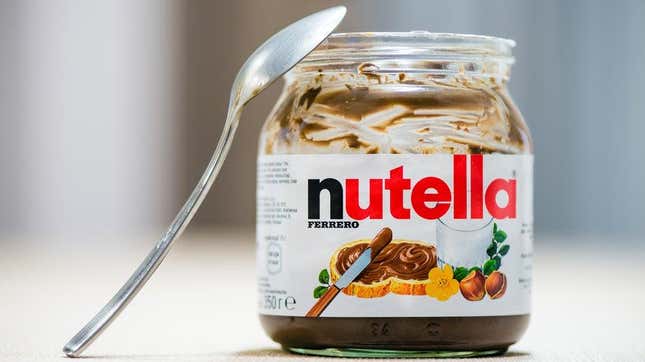
As both a parent and a person with various food-based issues, one of the most important lessons I’ve learned is this: food is food. If a kid eats dessert instead of broccoli, they’re still eating food, and that’s a good thing. Still, the conditioning runs deep; I find myself perusing the aisles of grocery stores, searching for “healthy snacks” for the kids’ lunchboxes and playdates. But now, a series of TikTok videos from health food branding specialist Matt Rosenman is making me rethink my shopping habits.
In his videos, Rosenman uses photoshop to repackage foods we usually think of as “junk,” adding meaningless buzzwords and pretty fonts to the label to make things like cotton candy resemble natural, “healthy” products—yet importantly, these redesigned packages never make false claims about the product and always feature language that fits within the FDA’s labeling regulations. It’s enough to make any consumer realize that not only is food just food, but marketing is everything else. Our decisions about what to eat are driven almost entirely by branding.
How to rebrand “junk” food to sound healthy
Rosenman’s approach to these product rebrands is methodical. In this video, for example, he takes our favorite seasonal vegetable, Brach’s candy corn, and repackages it to look worthy of an endcap at Whole Foods.
“Having ‘candy’ in the name, it’s never going to sound healthy, so we have to change it,” Rosenman says in the video. To draw focus away from the product’s sugar content, he instead highlights honey, a sweetener in conventional candy corn that sounds more health-friendly and “natural.” The proposed name change? “Honey Harvest Kernels.”
From there, he uses graphic design to make the packaging look like a small-batch health food, slapping the new name on a stand-up resealable bag to suggest sophistication. He tells no lies in his transformation; candy corn is fat free and gluten free, so those claims go on the label. It does not contain artificial sweeteners or high fructose corn syrup, so that goes on the label, too. Any of the product’s less desirable attributes, like artificial flavoring, are disclosed in tiny font at the very bottom of the bag.
Other products Rosenman has rebranded, among many others:
“This rebranding series started as a one-off video to showcase how easy it is to frame any food in a healthy light,” Rosenman tells The Takeout via email. He takes suggestions from viewers and selects products that would be most entertaining to transform, “and then I sit down and look at the nutrition facts and ingredients to pull out the components of the food that will make it sound the healthiest.” He uses his background in health sciences to inform these choices.
What makes a food “seem” healthy or not
Health food trends come and go, and Rosenman capitalizes on these fads in his phony product rebrands.
“We’ve gone through many different waves of what we consider ‘healthy’ as a society,” he says, “so I always like to look for those things that were once (or are still) very trendy: fat-free, gluten-free, non-GMO, no trans fat, etc.” He then combs through the product’s actual attributes and does what all marketing companies do: He finds “something in the ingredients that I can pull and make a focal point.”
It really takes very little influence to sway the public on a certain food or ingredient.
“With social media, diet trends and movements spread like wildfire,” Rosenman says. “It only takes one study to come out, whether valid or totally misleading, to say one specific ingredient is good or bad.”
As a result of these fluctuations in public opinion, food companies change their marketing or packaging strategies. While companies must adhere to FDA guidelines around food labeling, Rosenman’s rebrands do fall within those guidelines, even if they’re extreme examples of redirecting a consumer’s attention. This is intentional on his part, “to point out the silly ways that companies can easily get around FDA guidelines.”
While many companies do get sued for misleading marketing, Rosenman says, many of the biggest corporations are not deterred since they can easily cover legal fees and settlements.
How to choose the “right” food at the grocery store
Since the front label can obscure so many facts about a product beneath layers of cheery marketing copy, Rosenman says it’s very important that consumers look at the ingredient list to inform their choices instead.
“The front of any food product can be extremely misleading, but the nutrition facts and ingredients cannot lie,” he notes. You can be drawn to a food by eye-catching packaging, but the list of what’s inside is black and white.
“Ultimately, my goal is to show everyone that it’s important to choose foods or drinks based on what is important to you, not just what the label wants you to think is important,” says Rosenman. Since “ANY food company is going to use all of its resources to convince you to buy their product,” he wants consumers to open their eyes to “the many ways we are being deceived every single day.” The corporate world might be trying to pull one over on us, but that’s just because they don’t count on us doing our homework.
Source: thetakeout.com






















Add comment